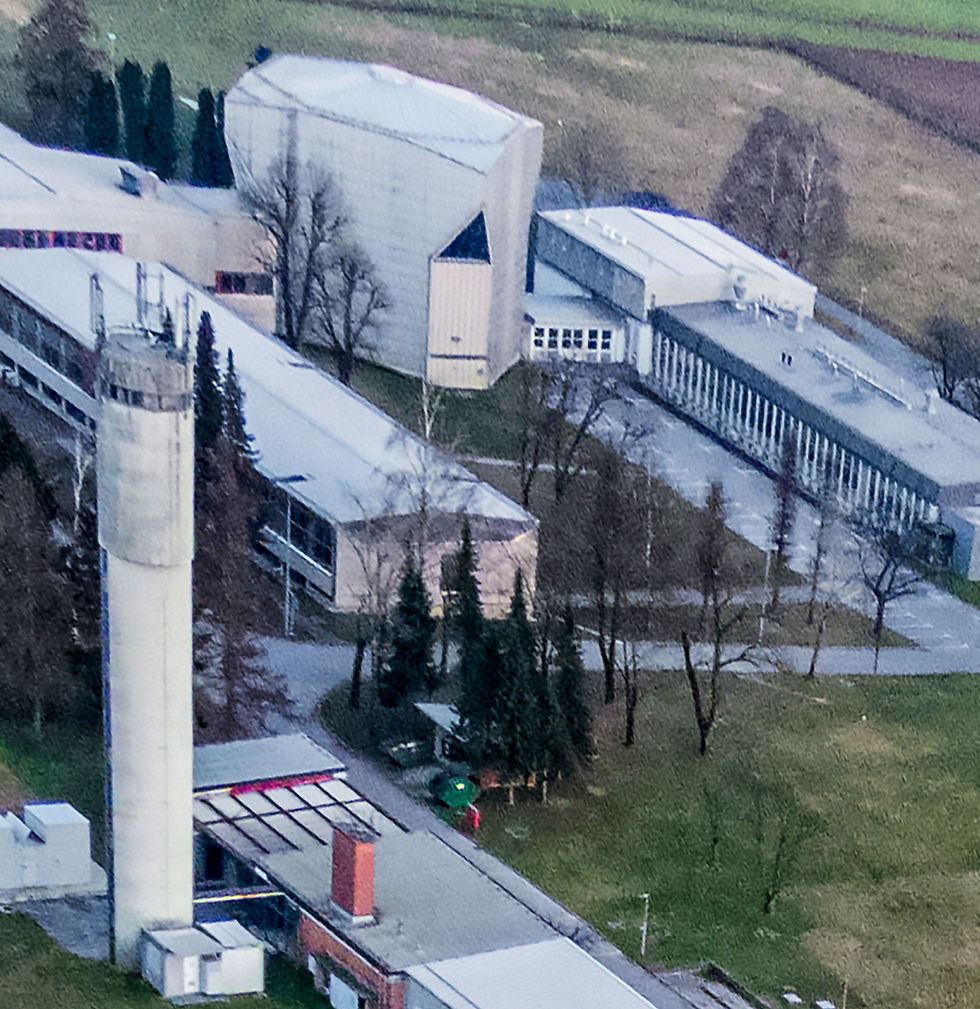A Kite Above a Nuclear Reactor
- kapjasa
- Feb 24, 2020
- 2 min read
In the sixties Slovenia was ready to go nuclear, and the efforts culminated in the 730 MW Nuclear Power Plant near Krško, built jointly by Slovenia and Croatia, that went online in 1981.
.
But the first step in going full nuclear was acquiring a small research and training reactor called TRIGA (Training, Research, Isotopes, General Atomic) Mark II. This 250 kW light water reactor has a core of around 70 fuel elements consisting of 20 % enriched uranium distributed in zirconium hydride moderator.

The Reactor Infrastructure Centre of the Josef Stefan Institute
The Reactor Infrastructure Centre in Podgorica near Ljubljana, a part of Josef Stefan Institute, was built in 1966 and the TRIGA Mark II reactor achieved its first criticality on May 31, 1966.
A power pulse of the TRIGA reactor in Podgorica - the blue light is the Cerenkov radiation, produced by particles faster than the speed of light in water (similar to the sonic boom)
The main feature of TRIGA design is inherent safety - it's impossible to make it explode or melt or leak, even on purpose. That's because the fuel elements have a large negative fuel temperature coefficient of reactivity, meaning that as the temperature of the core increases, the reactivity rapidly decreases. In the pulse mode its output power can be safely increased up to 1000 MW for a fraction of a second.

The Reactor Infrastructure centre was designed by architect Oton Jugovec, and is a part of Slovenian architectural heritage. The reactor itself is housed in the funny-looking building with triangular windows on the far left.

Close-up of the reactor building. Unfortunately the light conditions were .. well, less than satisfacory ...
The reactor in Podgorica has operated continiously and without incidents for more than 50 years. It is used for nuclear operations and safety training, for research, for production of various radioactive isotopes for medical purposes and industrial use, and for irradiation of certain elements and equipment - for example of various components for the giant ATLAS detector, used to study proton-proton interactions at the Large Hadron Collider (LHC) at CERN.

This kite aerial session was done in the dying light of the day, and in the wind way too strong for our venerable Rokkaku ... so, we shall return to this interesting site!
Kite aerial photos shot with Nikon P330 on a Rokkaku kite.

Disclaimer: at no time did the kite or the camera fly directly above the restricted area of the RIC IJS.




Comments